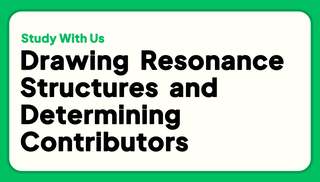When removing a proton we are looking at the area that has a full positive charge or a partial positive charge. We saw this with the full positive charge on the N and partial positive charge on the pi bonds.
We also know to remove a H from the more electronegative atom because it will hold a negative charge better than a C. Carbons do not like being negative they are most happy when neutral.



Replied on Lesson: General Chemistry Review for Organic Chemistry 1
17 Sep 20:44
If you used a triple bond then the formal charges have changed and are no longer neutral which is preferred. Plus if you didn't add the lone pairs and just placed a triple bond the number of electrons would be off. You'll see the below image explains why it had to be a double bond.
When you aren't sure of the structure always check if you have the correct number of electrons (octet rule) and if the formal charges are neutral. Neutral structures want every atom to have a neutral formal charge. When there is a net charge of let's say -1 then the more electronegative atom will have the negative formal charge.